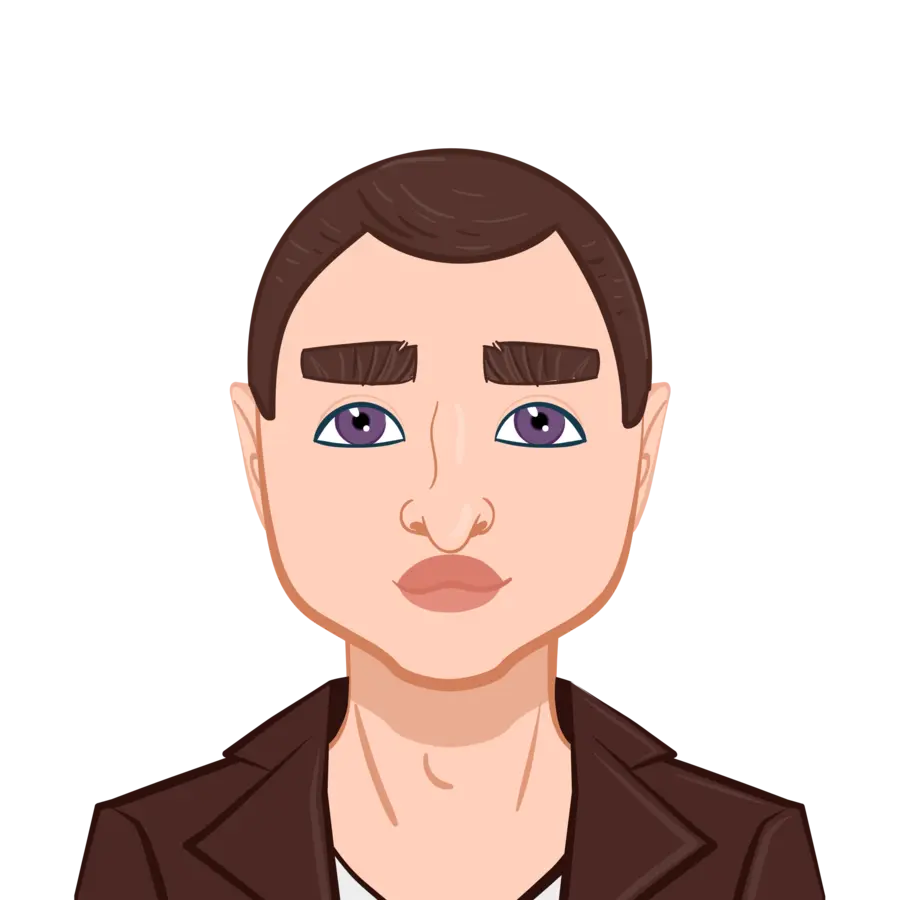Connections on Manifolds: A Key to Understanding the Intricacies of Curvature

In the vast realm of mathematics, the concept of connections on a manifold holds a significant place. For university students tackling complex math assignments related to geometry, topology, or differential equations, understanding connections on manifolds is not just a prerequisite but a fundamental tool. In this comprehensive discussion, we will delve deep into the theoretical underpinnings of connections on manifolds and explore how they play a pivotal role in deciphering the intricate concept of curvature. So, if you're gearing up to do your Manifold Hypothesis assignment, fasten your seatbelts as we embark on this mathematical journey.
The Basics: What is a Manifold?
Before we dive into the world of connections, let's briefly review the concept of a manifold. In simple terms, it is a space that looks flat when examined closely. However, when you step back and take a broader view, it can exhibit complex geometric properties. Think of the Earth's surface – it appears flat when you're standing on a small patch of it, but as you explore more of it, you encounter curves, hills, and valleys.

Understanding Tangent Vectors
To appreciate the concept of connections on a manifold, we need to first understand tangent vectors. Tangent vectors are mathematical objects that live on a manifold and capture the idea of direction at a particular point on the manifold. Imagine standing at a specific point on the Earth's surface; the tangent vector at that point represents the direction you can move in at that location. In mathematical terms, it is an element of the tangent space at that point.
Moving Around a Manifold
Now, imagine navigating across the manifold – the Earth's surface, for instance – from one point to another. To do this, you need a notion of parallel transport, which is where connections come into play. Connections on a manifold provide a way to transport tangent vectors smoothly along curves or paths on the manifold.
Defining Connections on Manifolds
A connection on a manifold is a mathematical tool that assigns a notion of parallel transport to each tangent space on the manifold. In essence, it tells us how to move vectors from one point to another while maintaining a sense of direction. This concept might sound abstract at first, but it plays a crucial role in understanding curvature.
Curvature Emerges
Now, let's talk about the star of the show – curvature. Curvature is a measure of how much a manifold deviates from being flat. It tells us about the bending, warping, or twisting of the manifold. In the context of connections, curvature arises when we examine how vectors change as they are parallel transported along closed curves.
The Curvature Tensor
The curvature of a manifold is encoded in a mathematical object known as the curvature tensor. This tensor is a way of quantifying how vectors change as they are transported along different paths. It describes how much a vector will rotate when parallel transported around a closed loop on the manifold. In essence, the curvature tensor tells us how much the manifold deviates from being flat.
The Role of Connections in Understanding Curvature
So, how do connections on manifolds help us understand curvature, and why is this important for math assignments? Let's break it down.
- Geometric Intuition: Connections on manifolds offer a profound geometric insight into the behavior of vectors in curved spaces. They allow us to visualize how vectors change direction as we move across the manifold, providing an intuitive understanding of how curvature manifests. This geometric intuition is invaluable for students, as it transforms abstract mathematical concepts into tangible geometric interpretations, paving the way for a deeper appreciation of the intricate world of curved geometries and differential equations.
- Applications in Physics: The significance of connections on manifolds extends far beyond theoretical mathematics, finding critical applications in physics, particularly in Albert Einstein's theory of general relativity. Connections enable us to model the curvature of spacetime, which underlies the gravitational force. Understanding how connections affect the paths of particles and light in curved spacetime is essential for predicting phenomena like gravitational lensing and the behavior of massive celestial objects, showcasing their pivotal role in the physical world.
- Differential Geometry: For university students diving into the realms of advanced mathematics, connections on manifolds are a fundamental concept in differential geometry. This branch explores the properties of smooth spaces and their curvature. A solid grasp of connections is non-negotiable, as they lay the groundwork for understanding geodesics, curvature tensors, and Riemannian manifolds. Proficiency in differential geometry equips students to tackle complex mathematical structures and delve into the elegant intricacies of curved spaces, making it indispensable for math assignments and beyond.
- Advanced Mathematics: Connections on manifolds serve as a foundational concept in advanced mathematics. For those venturing into the realms of Riemannian geometry, algebraic topology, or differential equations, a robust grasp of connections is non-negotiable. These connections become building blocks for exploring complex mathematical structures, paving the way for students to tackle intricate problems and contribute to cutting-edge research in fields where connections play a pivotal role in uncovering deeper mathematical truths.
The Fundamental Concepts of Connections
Connections on manifolds are often associated with covariant derivatives. A covariant derivative is an extension of the usual derivative that takes into account the curvature of the underlying manifold. It provides a way to differentiate vector fields along curves on the manifold while accounting for how vectors change under parallel transport.
Consider a vector field on a manifold. At each point on the manifold, you have a vector. Now, imagine moving along a curve on the manifold. At each point along the curve, the vector field defines a vector. The covariant derivative tells you how this vector field changes as you move along the curve.
The concept of a connection formalizes this process. It introduces a connection coefficient or Christoffel symbol, which describes how the basis vectors of the tangent space change as you move from one point on the manifold to another. These coefficients are key in understanding how curvature manifests.
Parallel Transport and Holonomy
One of the intriguing aspects of connections on manifolds is parallel transport. Parallel transport involves moving a vector along a curve on the manifold while keeping it as parallel as possible to its original direction. How the vector changes during this process is precisely what connections help us understand.
Imagine you have a vector at one point on the manifold, and you want to move it to another point while keeping it parallel to itself. Parallel transport tells you how to do this smoothly and consistently. However, it's important to note that the outcome may depend on the path you choose. This phenomenon leads us to the concept of holonomy.
Holonomy describes how a vector changes after being parallel transported around a closed loop. It is an essential ingredient in understanding the curvature of a manifold. The presence of non-zero holonomy indicates that the manifold is curved. In contrast, if the holonomy is zero, the manifold is flat.
Riemann Curvature Tensor
To delve deeper into the role of connections in understanding curvature, we must introduce the Riemann curvature tensor, often simply called the curvature tensor. This tensor encodes the curvature of a manifold in a precise and systematic way.
The Riemann curvature tensor takes four vector inputs and produces a vector as output. It tells you how vectors change when parallel transported around an infinitesimal loop on the manifold. In mathematical terms, it measures the failure of the covariant derivative to commute. In a flat space, the covariant derivative of a vector field along two different paths would be the same, but on a curved manifold, this won't be the case, and the difference is quantified by the curvature tensor.
Gauss-Bonnet Theorem and Curvature in Action
To see curvature in action, let's discuss the Gauss-Bonnet theorem, a beautiful result that connects the curvature of a manifold to its topology. The Gauss-Bonnet theorem tells us that the integral of the Gaussian curvature (a specific type of curvature) over a closed surface is related to the Euler characteristic of that surface.
In essence, the Gauss-Bonnet theorem relates the curvature of a two-dimensional manifold to its topological properties. This theorem demonstrates the deep connection between geometry (curvature) and topology (the study of shapes and spaces).
For university students grappling with math assignments, understanding the Gauss-Bonnet theorem can provide powerful insights into how curvature and topology are intertwined. It showcases the real-world applicability of theoretical concepts related to connections on manifolds and their role in understanding the underlying structure of space.
Applications in Differential Geometry
Connections on manifolds find extensive applications in differential geometry. Differential geometry is a branch of mathematics that focuses on smooth spaces, their curvature, and their geometric properties. Here are some fundamental applications:
- Riemannian Geometry: Riemannian geometry is a specialized branch of differential geometry that deals with Riemannian manifolds. These are manifolds equipped with a metric, which allows the measurement of lengths and angles. Connections on Riemannian manifolds play a crucial role in defining the Levi-Civita connection, which is compatible with the metric structure. This connection is used to study geodesics (shortest paths), curvature, and other geometric properties of Riemannian manifolds.
- Principal Bundles: Connections are also essential in the theory of principal bundles. Principal bundles are a way of generalizing the notion of a fiber bundle, which associates a manifold (the base space) with a family of other manifolds (the fibers). Connections on principal bundles provide a framework for understanding gauge theories in physics, such as Yang-Mills theories, which describe fundamental forces like electromagnetism and the strong and weak nuclear forces.
- Fiber Bundles: In mathematics and physics, fiber bundles are ubiquitous. They describe how spaces vary locally, and connections on fiber bundles allow us to study the transport of objects (vectors, forms, etc.) between these varying spaces. This is particularly important in the context of gauge theories and understanding how fields evolve in physics.
Connections in Physics: General Relativity
Now, let's take a giant leap into the realm of theoretical physics. One of the most prominent applications of connections on manifolds is in Albert Einstein's theory of general relativity.
In general relativity, spacetime is a four-dimensional manifold equipped with a metric tensor that encodes the curvature of spacetime. Solving these equations allows us to predict the gravitational field around massive objects and describe phenomena like the bending of light by gravity (gravitational lensing) and the existence of black holes.
Connections come into play in general relativity when we consider how particles and light rays move in curved spacetime. The geodesic equation, which governs the paths of free-falling particles and light rays, is derived using connections and curvature. This equation describes how objects follow the curved paths dictated by the gravitational field.
So, for students aiming to understand the intricacies of general relativity, connections on manifolds provide the mathematical framework to make sense of this revolutionary theory.
Conclusion
In conclusion, connections on manifolds are a fundamental concept in mathematics with far-reaching implications. They provide a framework for understanding how vectors behave in curved spaces, ultimately leading to the concept of curvature. This understanding is not only crucial for mathematics assignments but also for applications in physics, differential geometry, and advanced mathematics. So, the next time you encounter a math assignment related to connections and curvature, remember that these concepts are not just theoretical abstractions but powerful tools that unlock the secrets of the mathematical universe. Do your math assignment with confidence, armed with the knowledge of connections on manifolds, and unravel the mysteries of curvature.